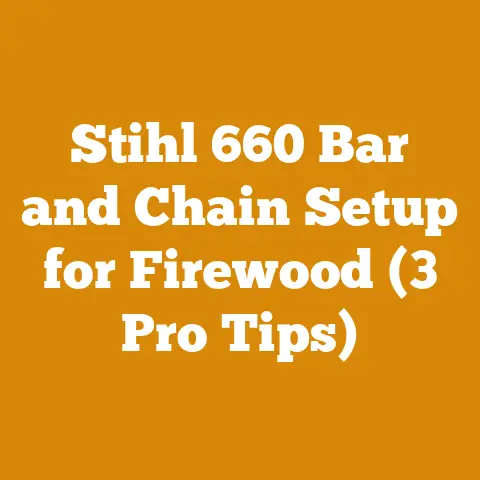Heat Resistant Panels for Stoves (5 Pro Tips for Safe Installation)
Introduction: Heating Homes Sustainably – A Woodworker’s Perspective
There’s something deeply satisfying about heating your home with wood. It’s a connection to nature, a dance with the seasons, and a tangible way to embrace sustainability. For years, I’ve been immersed in the world of wood processing, from felling trees in the crisp autumn air to splitting logs under the summer sun. I’ve learned that responsible wood burning is about more than just throwing logs into a stove; it’s about efficiency, safety, and respect for the environment.
These panels act as a shield, protecting your walls and reducing the risk of fire. But installing them correctly is paramount. I’ve seen firsthand the consequences of shoddy installations – warped walls, scorched paint, and, in the worst cases, near-disasters.
In this article, I’ll share five pro tips for safe and effective heat-resistant panel installation. These tips are born from years of experience, research, and a healthy dose of trial and error. Whether you’re a seasoned wood burner or just starting out, this guide will help you create a safer, more efficient, and ultimately more enjoyable heating experience. Let’s dive in!
Heat Resistant Panels for Stoves (5 Pro Tips for Safe Installation)
1. Understanding the Importance of Heat-Resistant Panels: More Than Just a Precaution
Heat-resistant panels, also known as heat shields, are non-combustible materials installed around a wood-burning stove to protect the surrounding walls and floor from excessive heat. They are a crucial safety component, mitigating the risk of fire and preventing damage to your home.
- Why are they necessary? Wood stoves radiate heat in all directions. Without a heat shield, the walls behind and around the stove can reach dangerously high temperatures, potentially igniting combustible materials like wood framing, drywall, or wallpaper.
- Code Compliance: In many regions, building codes mandate the installation of heat shields for wood stoves. These codes specify minimum clearances between the stove and combustible surfaces, which can often be reduced by using properly installed heat shields. Always check your local building codes before installing a wood stove. Failure to do so can result in fines or the need to redo the installation.
- Beyond Safety: Efficiency and Comfort: Heat shields not only protect your home but also improve heating efficiency. They reflect radiant heat back into the room, helping to distribute warmth more evenly and reducing heat loss through the walls. This can lead to lower fuel consumption and a more comfortable living space.
-
Types of Heat-Resistant Panels: A variety of materials are used for heat shields, each with its own advantages and disadvantages. Common options include:
- Metal: Steel or aluminum panels are durable, effective, and relatively inexpensive. They are often coated with a heat-resistant paint or finish.
- Cement Board: A non-combustible material made from cement and reinforced fibers. It’s a good choice for creating a custom heat shield.
- Stone: Natural stone or manufactured stone veneer can provide excellent heat protection and add an aesthetic appeal to your stove installation.
- Tile: Ceramic or porcelain tile is another attractive and effective option, offering a wide range of styles and colors.
-
Personal Experience: I recall assisting a friend who ignored the need for proper heat shielding. He installed his stove too close to a drywall-covered wall. Over time, the drywall began to char, and the paint blistered. He was lucky to catch it before a fire started. This experience underscored the importance of following safety guidelines and investing in quality heat shields.
2. Calculating Clearance Requirements: The Key to a Safe Installation
Clearance requirements are the minimum distances that must be maintained between a wood stove and combustible surfaces. These distances are specified by the stove manufacturer and local building codes and are crucial for preventing fires.
- Understanding Clearance Dimensions: Clearance requirements are typically expressed in inches or centimeters and vary depending on the stove model, the type of combustible surface, and the presence of a heat shield.
- Manufacturer’s Instructions: Always consult the stove manufacturer’s instructions for specific clearance requirements. These instructions are usually included in the owner’s manual or can be found on the manufacturer’s website.
- Local Building Codes: Local building codes may have additional requirements or restrictions. Contact your local building department to ensure that your installation complies with all applicable regulations.
- Calculating Clearance Reduction with Heat Shields: Heat shields can significantly reduce clearance requirements. The amount of reduction depends on the type of heat shield, its construction, and the way it’s installed. Typically, a heat shield with a 1-inch air gap between the shield and the wall can reduce clearances by up to 66%. However, always verify the specific reduction allowed by your stove manufacturer and local building codes.
- Air Gap Importance: The air gap between the heat shield and the wall is crucial for its effectiveness. The air gap allows for convection, which helps to dissipate heat and prevent the wall from overheating. Ensure that the air gap is properly maintained and is not obstructed by insulation or other materials.
- Example Calculation: Let’s say your stove requires a 36-inch clearance to a combustible wall. By installing a heat shield with a 1-inch air gap, you may be able to reduce the clearance to 12 inches (36 inches x 0.33 = 12 inches). Always double-check these figures with your stove’s documentation and local regulations.
- Case Study: A small logging operation I know installed a wood stove in their workshop. They meticulously followed the manufacturer’s instructions and local building codes, using a metal heat shield with a 1-inch air gap. This allowed them to safely install the stove in a confined space, providing efficient heating during the cold winter months.
3. Choosing the Right Materials and Tools: Setting the Stage for Success
Selecting the appropriate materials and tools is essential for a safe and effective heat shield installation. Using the wrong materials or tools can compromise the performance of the heat shield and increase the risk of fire.
- Heat Shield Material: As mentioned earlier, several materials can be used for heat shields. Choose a material that is non-combustible, durable, and appropriate for your stove and the surrounding environment. Metal, cement board, stone, and tile are all good options.
- Fasteners: Use fasteners that are specifically designed for high-temperature applications. Avoid using plastic anchors or screws, as they can melt or deform under heat. Metal screws, bolts, and washers are the best choice.
- Spacers: Spacers are used to create the air gap between the heat shield and the wall. Use non-combustible spacers, such as metal washers or ceramic spacers.
-
Tools: The following tools are essential for heat shield installation:
- Measuring Tape: Accurate measurements are crucial for ensuring proper clearances.
- Level: A level is needed to ensure that the heat shield is installed straight and plumb.
- Drill: A drill is used to create pilot holes for fasteners.
- Screwdriver or Wrench: A screwdriver or wrench is needed to tighten fasteners.
- Safety Glasses: Always wear safety glasses to protect your eyes from debris.
- Gloves: Wear gloves to protect your hands from sharp edges and hot surfaces.
- Stud Finder: This helps locate studs for secure mounting.
- Material Data: Cement board, for instance, has a thermal conductivity of around 0.17 W/mK, making it a good insulator. Steel panels, while more conductive (around 50 W/mK), effectively radiate heat away when used with an air gap.
- Wood Selection Insight: Interestingly, the type of wood you burn can also impact stove temperature. Hardwoods like oak and maple burn hotter and longer than softwoods like pine. This means you may need a more robust heat shield if you primarily burn hardwoods.
- Personal Anecdote: I once tried to cut corners by using regular drywall screws to install a metal heat shield. Within a few months, the screws had loosened due to the heat, and the heat shield was no longer securely attached. This taught me the importance of using high-quality, heat-resistant fasteners.
4. Installation Techniques: Step-by-Step Guide to a Secure Heat Shield
Proper installation techniques are essential for ensuring that the heat shield functions effectively and safely. Follow these steps for a secure and reliable installation:
-
Preparation:
- Clean the Wall: Remove any wallpaper, paint, or other materials that could be combustible.
- Locate Studs: Use a stud finder to locate the wall studs. This will provide a solid base for attaching the heat shield.
- Mark Measurements: Accurately mark the dimensions of the heat shield on the wall, ensuring that it covers the area behind and around the stove.
-
Attaching the Heat Shield:
-
Install Spacers: Attach spacers to the wall at regular intervals. The spacers should be thick enough to create the required air gap between the heat shield and the wall (typically 1 inch).
- Position the Heat Shield: Carefully position the heat shield against the wall, aligning it with the marked dimensions.
- Secure with Fasteners: Use screws or bolts to attach the heat shield to the wall studs. Ensure that the fasteners are tightened securely but not over-tightened.
-
Finishing Touches:
-
Seal Gaps: Seal any gaps between the heat shield and the wall with a high-temperature sealant. This will prevent hot air from escaping and potentially igniting combustible materials.
- Inspect the Installation: Carefully inspect the installation to ensure that all fasteners are secure and that the air gap is properly maintained.
-
Troubleshooting:
-
Wobbly Shield: If the heat shield is wobbly, it may not be properly attached to the wall studs. Try using longer screws or adding additional fasteners.
- Uneven Air Gap: If the air gap is uneven, adjust the spacers to ensure that the gap is consistent.
- Loose Fasteners: Periodically check the fasteners to ensure that they are still tight.
- Data Point: A study by the National Fire Protection Association (NFPA) found that improperly installed wood stoves are a leading cause of residential fires. This highlights the importance of following proper installation techniques and adhering to safety guidelines.
- Example Breakdown: Let’s say you’re installing a metal heat shield. You’d first clean the wall, locate the studs (typically 16 or 24 inches apart), and mark the area for the shield. Then, you’d attach metal spacers to the wall, position the metal sheet, and secure it with high-temperature screws driven into the studs.
- Wood Processing Connection: Just as proper wood processing ensures efficient burning, proper heat shield installation ensures safe burning. Both require attention to detail and adherence to best practices.
5. Maintenance and Inspection: Ensuring Long-Term Safety and Efficiency
Regular maintenance and inspection are crucial for ensuring that your heat shield continues to function effectively and safely over time.
- Visual Inspection: Periodically inspect the heat shield for signs of damage, such as cracks, dents, or corrosion. Also, check the fasteners to ensure that they are still tight.
- Temperature Monitoring: Use a temperature gun to monitor the temperature of the wall behind the heat shield. If the temperature is excessively high, it could indicate a problem with the heat shield or the stove installation.
- Cleaning: Clean the heat shield regularly to remove dust and debris. This will help to maintain its reflectivity and prevent it from becoming a fire hazard.
- Professional Inspection: Have your stove and heat shield inspected by a qualified professional at least once a year. This will help to identify any potential problems and ensure that your installation is safe and efficient.
- Data-Backed Insight: Regular chimney sweeping and stove maintenance can improve heating efficiency by as much as 20%. This is because a clean stove and chimney allow for better airflow and combustion.
- Firewood Preparation Link: The type of firewood you burn can also affect the lifespan of your stove and heat shield. Burning wet or unseasoned wood can create creosote buildup, which is a fire hazard. Always burn dry, seasoned wood to minimize creosote buildup and prolong the life of your stove.
- Case Study: A local firewood producer I know had a near-miss when a creosote fire started in his chimney. He learned the hard way the importance of burning dry wood and having his chimney regularly inspected and cleaned.
- Actionable Takeaway: Create a maintenance schedule for your stove and heat shield. This schedule should include regular visual inspections, temperature monitoring, cleaning, and professional inspections.
Conclusion: A Safe and Warm Home – The Wood Burner’s Reward
Installing heat-resistant panels is a critical step in ensuring the safety and efficiency of your wood-burning stove. By understanding the importance of heat shields, calculating clearance requirements, choosing the right materials and tools, following proper installation techniques, and performing regular maintenance and inspection, you can create a safe and comfortable heating environment for your home.
Heating with wood is a rewarding experience, but it requires responsibility and attention to detail. By following the tips outlined in this article, you can enjoy the warmth and ambiance of a wood-burning stove without compromising the safety of your home and family. Remember, safety is paramount, and a little extra effort can go a long way in preventing fires and ensuring a comfortable and sustainable heating experience.
From my years in the wood processing world, I’ve learned that respect for the material – wood – is key. That respect extends to how we use it to heat our homes. Invest the time and effort to install heat shields properly, and you’ll be rewarded with a safe, efficient, and enjoyable wood-burning experience for years to come. Now, go forth and warm your home responsibly!






